Tiling a bathroom or shower requires careful consideration such as vertical vs horizental tiling in addtion to the tile’s type, style, size, decorative aspect, and color, among other factors.
There are several factors to consider before making a final decision. Whether you are investing in real stone or choosing a more economical ceramic tile, the method in which the bathroom tiles are fitted is also a significant option.
Most homeowners are often torn between horizontal or vertical bathroom tiles. Although the arrangement won’t make any difference to the actual area, it can alter your bathroom’s looks.
So, which one is truly a superior look for your bathroom?
Horizontal Bathroom Tiles
A horizontal tile plan might make your bathroom area look broader than it is. This is an option for individuals with a high ceiling and limited floor space.
This arrangement is better made with smaller tiles to generate greater depth. You may also utilize mosaics to intensify the look. Using different tile colors to form lines will also accentuate depth.

Vertical Bathroom Tiles
If you’re working with a small footprint but tall ceilings, this may be the perfect plan for you. This usually creates the illusion of a higher ceiling and a more spacious environment. Due to the layout’s numerous grout joints, you might also want to choose larger tiles rather than smaller ones to avoid the bathroom appearing crowded.
To draw lines, you can also use opposing tile colors. The addition of vertical lines, such as striped tiles, can direct attention upward.
Frequently Used Bathroom Tile Designs
You don’t have to limit yourself to using only vertical or horizontal tile options for your bathroom. You can use your imagination and try out different tile designs. These might give your bathroom a unique perspective and improve its appearance.
Pattern for Straight-Lay Tiles
This tile arrangement is simple and doesn’t require much thought. It is a typical design that is applied to both square and rectangular tiles. The tiles are arranged in a straight line using this design. This produces a square grid that is timeless and tidy.
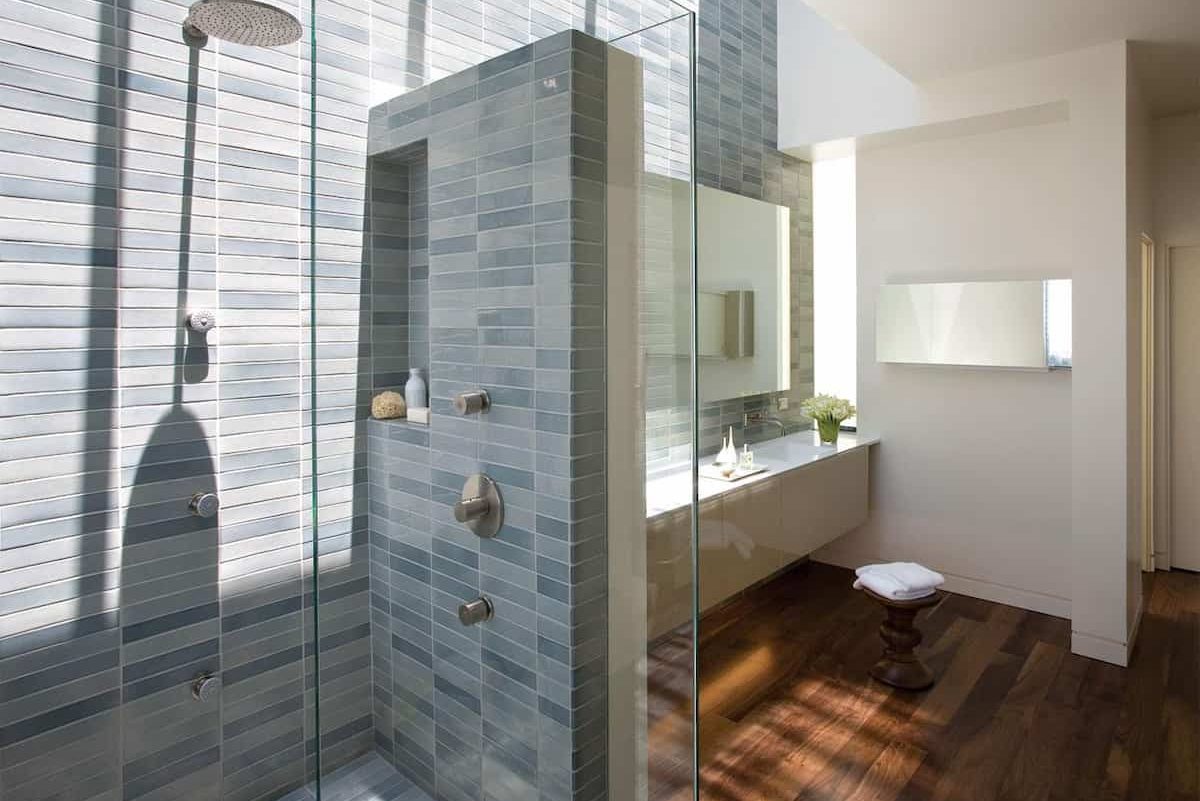
You can experiment with the grout to give a relatively straightforward look some contrast and drama. Additionally, it is the most adaptable and straightforward to install. Tiles that are horizontal or vertical are typically laid out in a straight line. If you don’t want anything too complicated, it’s a simple decision.
Brick-tile design
The brick layout is a well-liked design that has been used for many years. Its design resembles a brick wall, as the name would imply. Each tile row typically has a half-tile-width offset. The horizontal brick tile pattern is the most typical. You can also use the brick pattern vertically to make your bathroom appear taller. Long horizontal lines are produced as a result, subtly widening your bathroom. This classic style will look great in your bathroom. One variant places each tile on top of two other tiles. This layout works best with contrasting grout, which draws attention to the lines.
Patterned Herringbone Tiles
This tile design has only recently attracted attention. However, brick roads have been constructed using them for hundreds of years. By arranging the tiles in zigzag patterns, the herringbone effect is achieved. Its name comes from the fact that it resembles the bones of a herring fish.
You might pay a little bit more for this, though, as the tile pattern necessitates additional cutting to make the edges compatible.

You also need grout that contrasts with the brick pattern to highlight the lines. The herringbone tile design appears streamlined and elegant. It creates an accent, which gives the space more energy. This is a great method to give your bathroom an accent wall. On a large wall, though, avoid using it because it might be too overwhelming.
Checkerboard-style Tile Designs
You will be able to tell that you are arranging your tiles in the shape of a checkerboard if you use a checkerboard pattern.
This is applicable to tiles that are either black and white or have contrasting colors. Tiles can be arranged either in a straight line or a diamond pattern. A checkered design has a striking appearance.
It is also excellent for giving your bathroom vintage and classic appearance. This is ideal for accentuating walls or floors. Use simple decoration and solid colors to go with a checkerboard tile layout.
A checkerboard pattern will almost always clash with complicated colors and excessive decoration.
Diamond-shape (Diagonal) Tile Design
Another variation of the straight lay pattern is the diagonal pattern. Simply arrange your tiles in a straight line at a 45-degree angle.
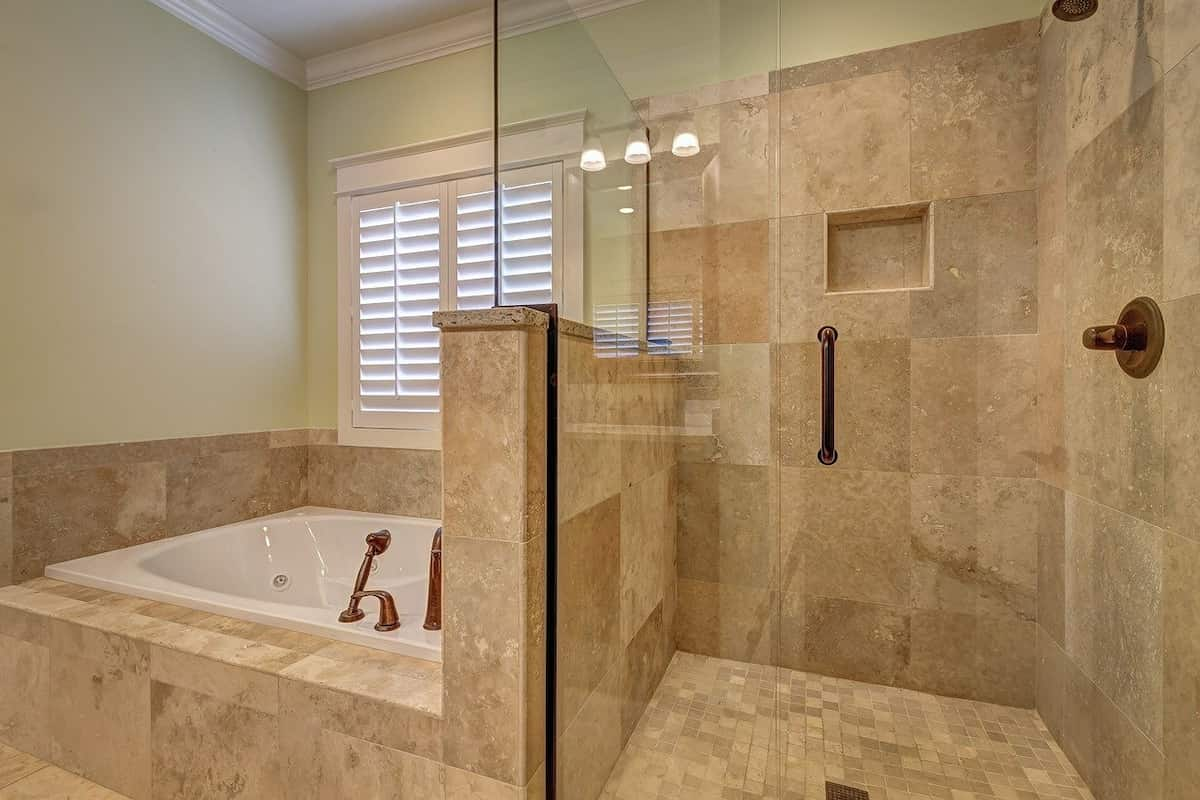
Using square tiles can give the effect of a diamond. Smaller spaces are best for this style. The grout lines cover the room and give the illusion that it is larger than it is. For the diagonal tile layout, you can also use alternating colors.
This is a fantastic floor tile design for a bathroom with an unusual shape. It deflects attention away from the room’s atypical features and ultimately gives the impression that it is larger.
A Pattern for Basketweave Tiles
Some homeowners might like this bold tile pattern for their bathrooms, even though it isn’t particularly popular. The stitching resembles that of a woven basket in the pattern. Lay two or more rectangular tiles together to form a square to make a basketweave pattern.
The second set of tiles is laid vertically after the first set is laid horizontally, and so on. This results in a textured appearance. It would also be best to use contrasting grout for this kind of layout. The basketweave tile design is excellent for giving your bathroom some drama.
Small spaces are also where it works best. Contrary to the herringbone, the basket weave does not require additional tile cutting. Therefore, homeowners who want to do it themselves can.
A Conclusion
When deciding how to arrange your bathroom tiles, you should think about your space and the final look you want to achieve when deciding. Knowing what you want to emphasize in your bathroom is also crucial. Do you want to add an accent wall to the room to add a focal point?
Do you want to increase the height or the space in your bathroom? Do you want to add a little drama? The vertical arrangement will work for you if you want to make your room taller.
You can choose a horizontal layout to give your bathroom a feeling of greater width. Although the most popular bathroom tile layouts are vertical and horizontal, other options are available. If you’re feeling adventurous, try something novel.
When selecting a bathroom tile layout, there is no right or wrong decision. Find inspiration that complements your taste and spending limit. Consider the tile patterns you can use for your bathroom while taking time.
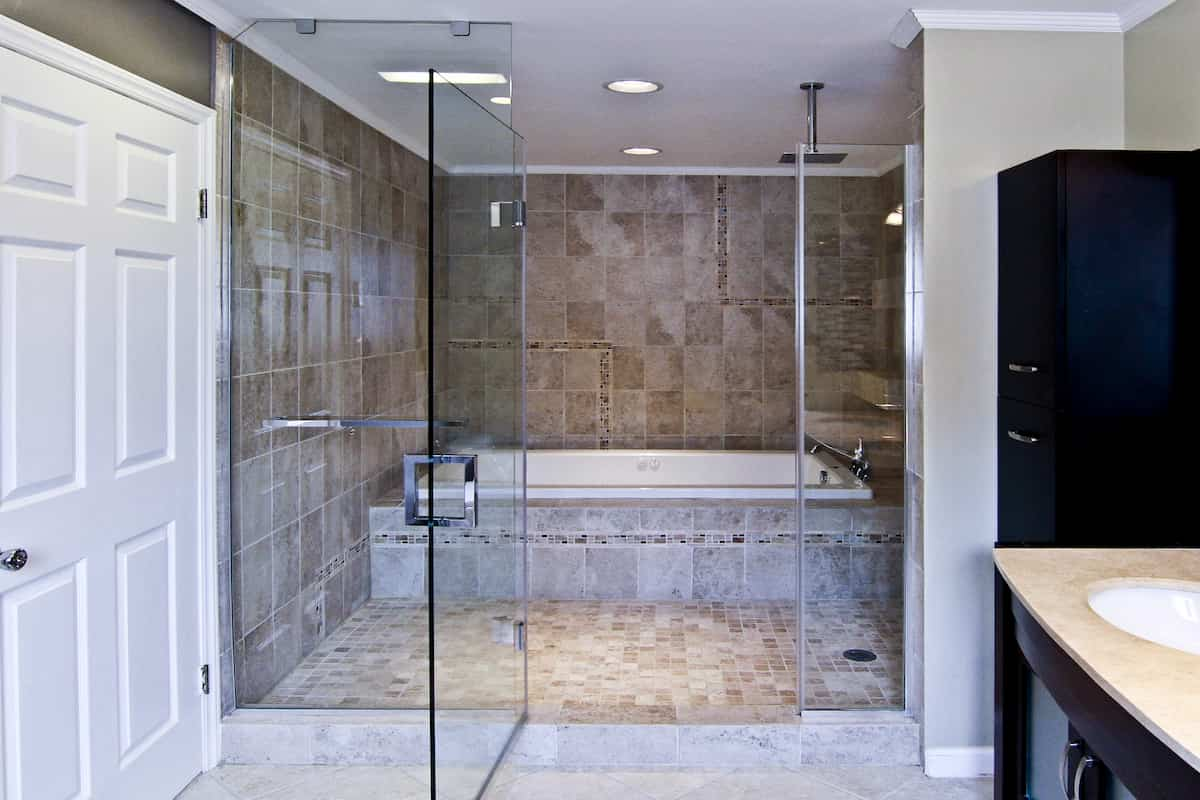


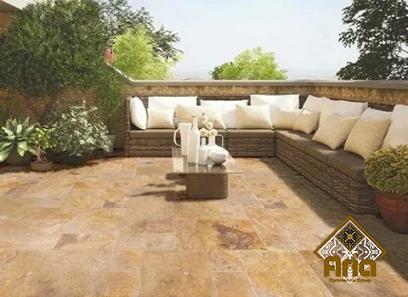


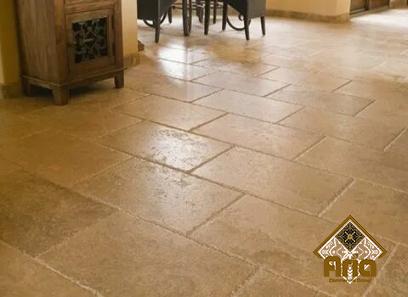

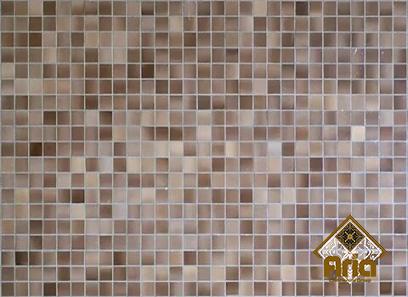


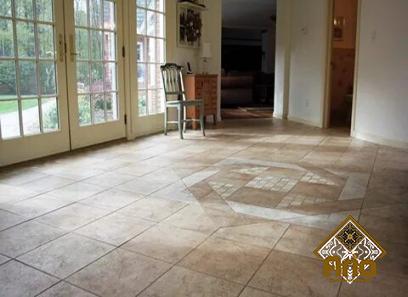
Your comment submitted.